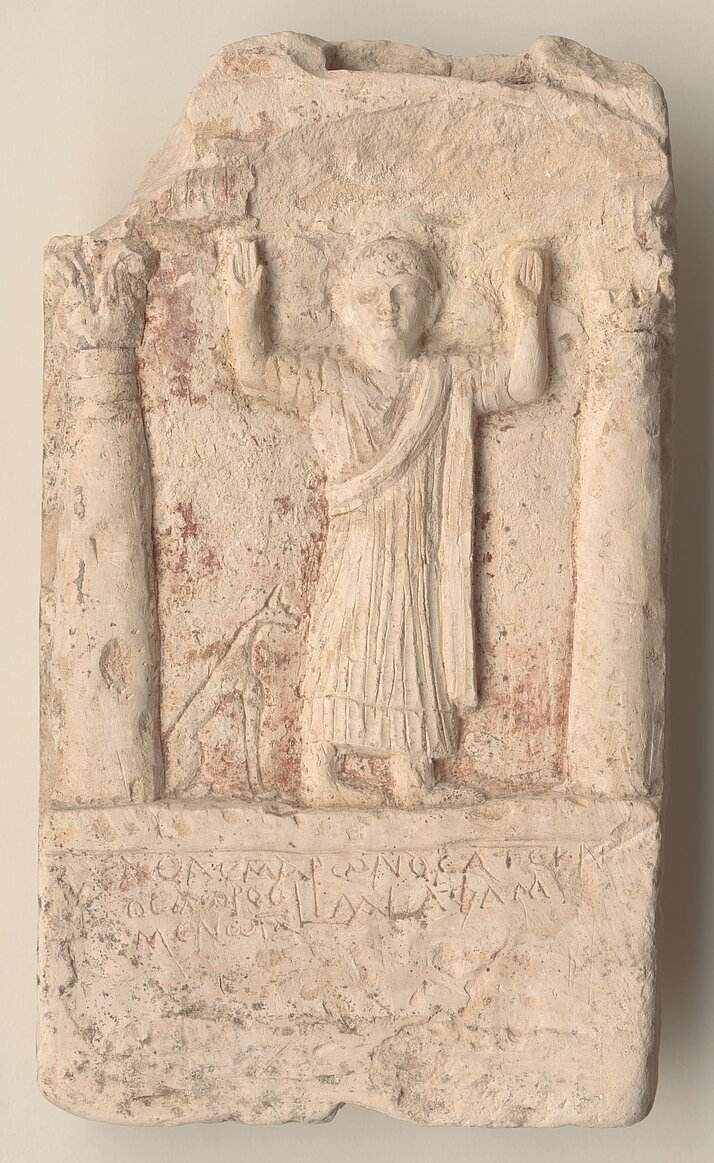Stele of Athas
Greek, 2nd century AD, limestone
Pl. 8
The most extensive group of Roman tombstones in Egypt comes from Terenuthis, a trading centre for natron and salt. These stelae display a mixed Egyptian-Hellenistic style. Carved by local artists, they are works of folk art made for the local elite. Almost all the tombstones have a relief image field and an inscription.
Some stelae (known as the Kappa series) unusually depict several people. The inscriptions on these stelae always give the same date of death, namely the 11th day of the month of Hathyr in the 20th year of an unnamed emperor. The possible dates are 7 November 154, 8 November 179 or 9 November 211 AD. One interpretation links the deaths of the people mentioned with a plague epidemic, but then the people would not all have died on the same day. A different type of event is therefore more likely, such as the collapse of a house or a shipwreck. Almost 40 people died in this disaster, almost all of them women and children.
This gravestone shows the deceased with his arms raised between two pillars. The columns were once painted grey-blue. To the left of the figure of the deceased, the god of the dead, Anubis, is depicted as a seated jackal. The three-line inscription is below the image.
Our database entry provides further references and a digitised version of the object.

